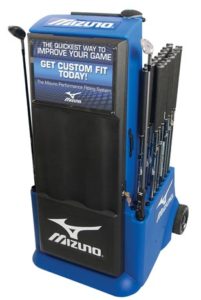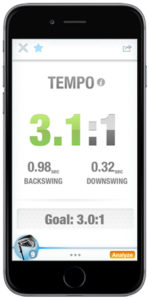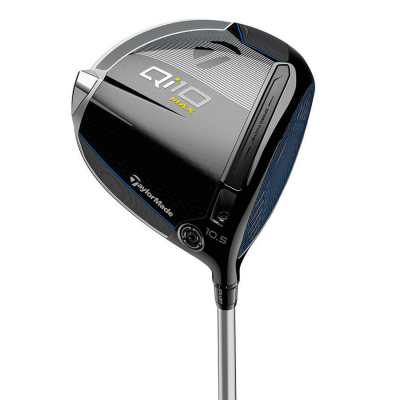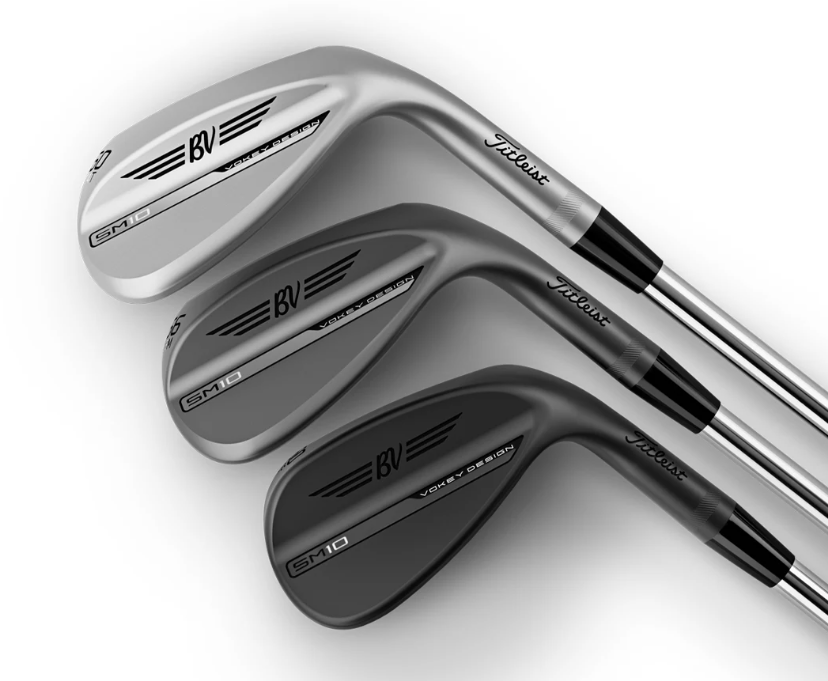Use our Fitting Wizard to see which shaft works for you!
Sign up or Login to your Account!
Measuring Golf Swing Dynamics
The key swing dynamics are Tempo, Transition and Release.
Tempo: This is the general timing of the golfer’s full swing. The full golf swing takes between .8 and 2.5 seconds. Our testing shows that the average golf swing is 1.2 seconds, of which roughly 75% is in the back swing and 25% in the forward swing. If you are using a launch monitor that calculates swing tempo, or one of the devices that measures tempo, use the following guidelines: Fast Tempo: Less than 1.0 Seconds Medium Tempo: 1.0 to 1.4 Seconds Slow Tempo: 1.5 to 2.5 Seconds In general, the faster the tempo, the golfer will benefit from heavier shafts and swing weights. Slower tempos will benefit from lighter shafts and swing weights. The tempo information is used by the BGF Fitting System to determine initial shaft weight and swing weight recommendations.
Transition: This is the swing move at the top of the back swing where the golfer “transitions” to the forward swing. This measure is can only truly be determined by accelerometers or other devices in the golf club. For current fitting practices, you will observe the swing and place the golfers transition in the categories of Slow, Medium and Fast. In general, the faster the transition, the stiffer the butt section of the shaft recommended. Other factors affected by transition are shaft weight and swing weight. Usually, tempo and transition are very similar, i.e. fast tempo golfers have fast transitions, and slow tempo golfers have slow transitions, but that is not always the case.
Release: This is the point in the golfer’s forward swing that they stop accelerating the golf club. Every golfer stops accelerating, or releases the club at some point prior to impact. Better golfers typically have a late release while beginners and high handicap golfers typically have an early to mid release. When the BGF System used the True Temper Shaft Lab, it was easy to determine a golfers release point based upon data captured by the system. A simple way to determine the release point in the golf swing is to have the golfer take their driver and hold it upside down, gripping just above the head, and take a full swing like they were hitting a ball. You should be able to hear the “whoosh” of the club at one of three places in the swing:
Shoulder-high Whoosh = Early Release
Waist-high Whoosh = Mid Release
Knee-high Whoosh = Late Release
Another tool is available from SwingRite golf swing trainer which does essentially the same thing as the above technique. You should set the trainer at at least 7 and then have the golfer swing the club. The “click” replaces listening for the whoosh above. You can find the training aid at www.swingrite.com.
In general, golfers with later release points need stiffer tip sections in their shafts, and potentially, need a lower trajectory shaft. Golfers with early to mid release points can benefit from shafts that have softer tip sections to deliver more kick velocity at impact.
There are several devices to measure Tempo, Transition and Release.
 The Mizuno Shaft Optimizer, available from an authorized Mizuno golf dealer with a fitting cart, provides a pretty accurate numeric scale that can help you determine club speed with a 6 iron as well as the golf swing dynamics of tempo, transition and release.
The Mizuno Shaft Optimizer, available from an authorized Mizuno golf dealer with a fitting cart, provides a pretty accurate numeric scale that can help you determine club speed with a 6 iron as well as the golf swing dynamics of tempo, transition and release.
 The Golf Sense app from Zepp Golf is extremely helpful in identifying your tempo and developing a practice routine to maintain tempo. There are also a lot of other very useful golf swing dynamics measurements in the Golf Sense app that will help you maintain your golf swing.
One of the best systems to measure golf swing dynamics of Tempo, Transition and Release is the True Temper Shaft Lab. This system was developed by True Temper in the 1990’s but was used very simply to determine the proper shaft flex based upon tests with a driver and 5 iron. The underlying technology is very advanced and uses strain gauges in two axes to capture over 8,000 data points during a golfer’s swing. This information is then plotted on a graph that shows the amount of shaft deflection during a golfer’s down swing in both the toe-up/toe-down and lead/lag directions. Based upon the information, the system recommends shaft flexes for driver and iron. The limitation of the original Shaft Lab was that it did not incorporate swing speed or ball speed so some recommendations were either too stiff or too soft. The system does, however, show the true dynamics of a golfer’s unique swing. D’Lance Golf Performance Center has tested over 10,000 golfers using the Shaft Lab and identified 7 unique swing patterns. In addition, D’Lance Golf has looked at the underlying data captured by Shaft Lab and determined the actual measurements for Tempo and Release point.
There are very few of these systems in operation today. D’Lance Golf Performance Center in Englewood, CO and George Izett Golf in Ardmore, PA are two shops that continue to use the True Temper Shaft Lab. D’Lance Golf has incorporated both the Mizuno Shaft Optimizer and the Shaft Lab into their BGF Fitting System.
The Golf Sense app from Zepp Golf is extremely helpful in identifying your tempo and developing a practice routine to maintain tempo. There are also a lot of other very useful golf swing dynamics measurements in the Golf Sense app that will help you maintain your golf swing.
One of the best systems to measure golf swing dynamics of Tempo, Transition and Release is the True Temper Shaft Lab. This system was developed by True Temper in the 1990’s but was used very simply to determine the proper shaft flex based upon tests with a driver and 5 iron. The underlying technology is very advanced and uses strain gauges in two axes to capture over 8,000 data points during a golfer’s swing. This information is then plotted on a graph that shows the amount of shaft deflection during a golfer’s down swing in both the toe-up/toe-down and lead/lag directions. Based upon the information, the system recommends shaft flexes for driver and iron. The limitation of the original Shaft Lab was that it did not incorporate swing speed or ball speed so some recommendations were either too stiff or too soft. The system does, however, show the true dynamics of a golfer’s unique swing. D’Lance Golf Performance Center has tested over 10,000 golfers using the Shaft Lab and identified 7 unique swing patterns. In addition, D’Lance Golf has looked at the underlying data captured by Shaft Lab and determined the actual measurements for Tempo and Release point.
There are very few of these systems in operation today. D’Lance Golf Performance Center in Englewood, CO and George Izett Golf in Ardmore, PA are two shops that continue to use the True Temper Shaft Lab. D’Lance Golf has incorporated both the Mizuno Shaft Optimizer and the Shaft Lab into their BGF Fitting System.












